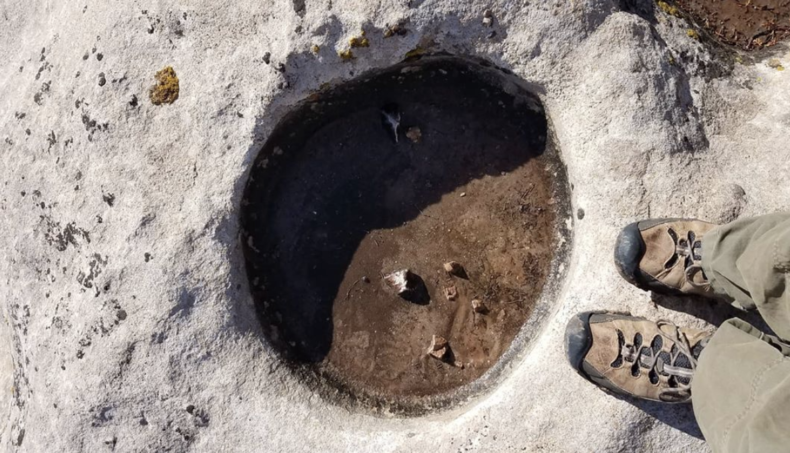
Yesterday, I took a walk in the winter desert where snow on sandstone melted and filled dishes eroded into rock. A common local name for these shallow catchments, just enough to drink, is waterpocket. You’ll also hear kissing pool. That’s how you access them, down on your knees, lips touching the surface.
Water conveys itself into rock. As if matching the spherical, beaded will of fluids, holes form into bowls and circles. In ragged terrain, they are like seeds. I shouldn’t recommend you drink from them, and I’ve never gotten sick from doing just that, but it’s worth a try, good for the stomach. Running water concerns me. You rarely know what it’s been traveling through. In these holes, you can tell where the water originated, a watershed of only immediate vicinity.
In the southern desert, northern Mexico and southern Arizona, they’re called tinajas, and some are deep enough for a cannonball dive. They form where rainwater cascades across bedrock, eroding holes that grow as sand and smaller rocks tumble inside the space, nicking and scraping. The can be the size of rooms, deep enough a swim to the bottom hurts your ears. Water and sediment polish them into fluted shapes, elegant necks and lips as smooth as ceramic pitchers.
Decades ago, I mapped and measured tinajas near the Arizona border with Mexico, where I found water hidden in one of the driest parts of North America, sometimes hundreds of gallons of old precipitation protected by shade, depths patrolled by swimming fairy shrimp, floors populated with shelled crustaceans the size of poppy seeds, called ostracods. To find these sites, I followed ancient, broken potsherds and read through the journals of a 17th century Jesuit missionary who made forays across this desert, recording tinajas wherever his team took water. The missionary discovered thousands of gallons glowing in moonlight, and called it Aguaje de la Luna, the watering place of the moon. It is rumored to be any one of a number of holes, some of which I found, and some remain a mystery.
The ones I found yesterday were simple, nameless, a gallon or two at most, enough to skim a kiss. They were not formed by running water as much as slow, molecular picking, the sandstone coming apart grain by grain. For me, they are a way of measuring the desert. To see them gleaming miles in the distance means abundance in small packages, places to come to your knees and drink.
Photo of one of yesterday’s waterpockets in western Colorado, by the author.
Loved your water book. I wandered ranges in southern New Mexico when young and found myself drinking from some odd sources, but was never sick.
Your book on tinajas was the first of your’s I found; I now own them all (I think!). It was a beautiful book and I think of it every time I visit the southwest and stumble onto a puddle of water than just shouldn’t be where it is.